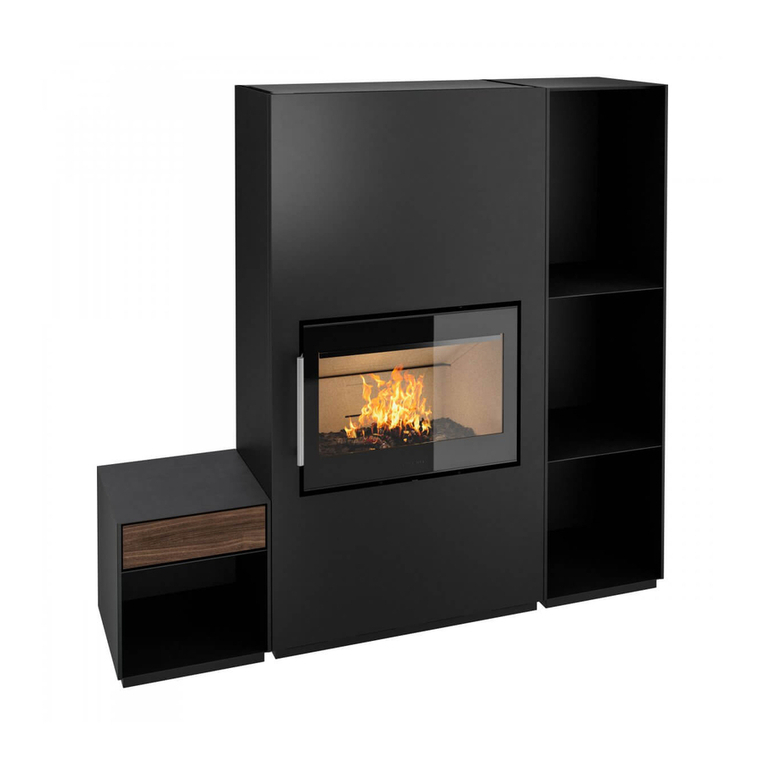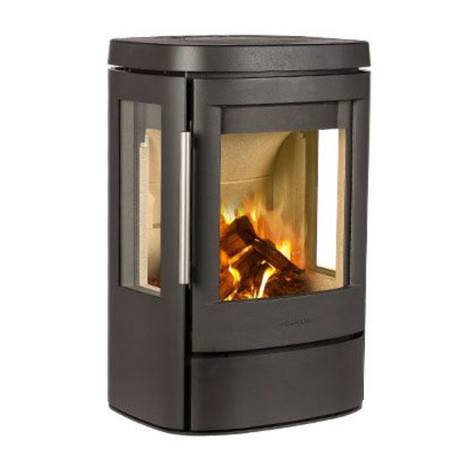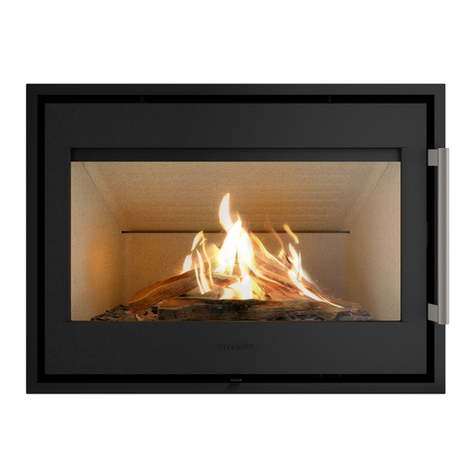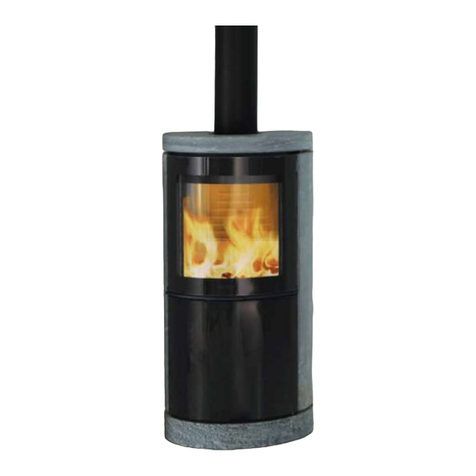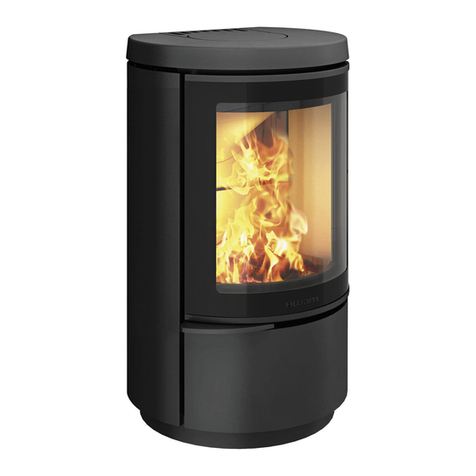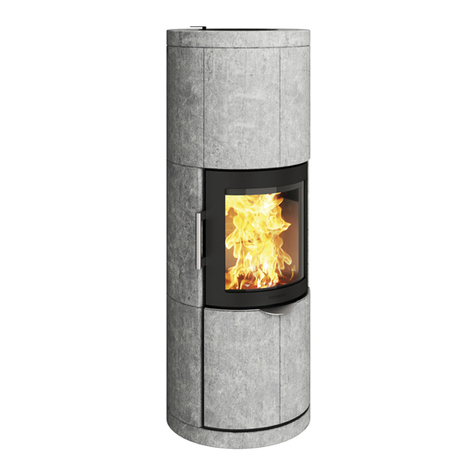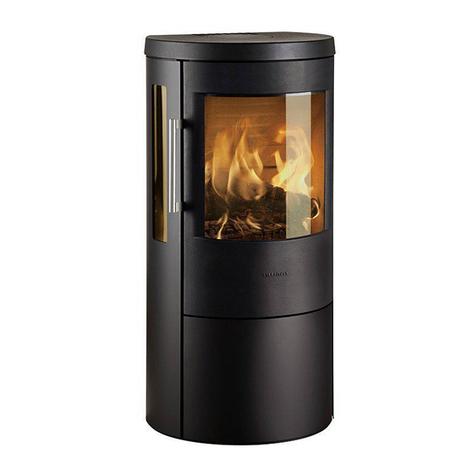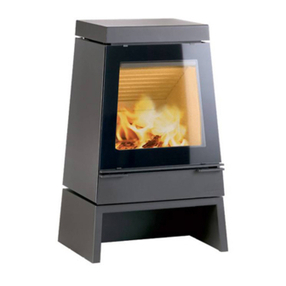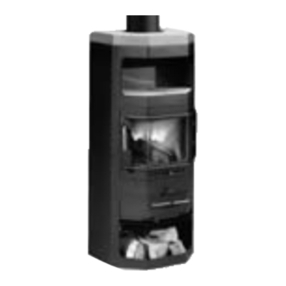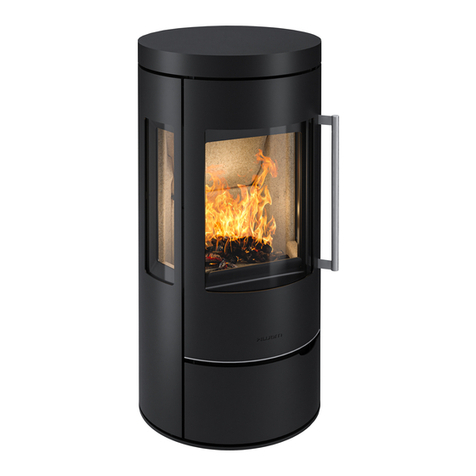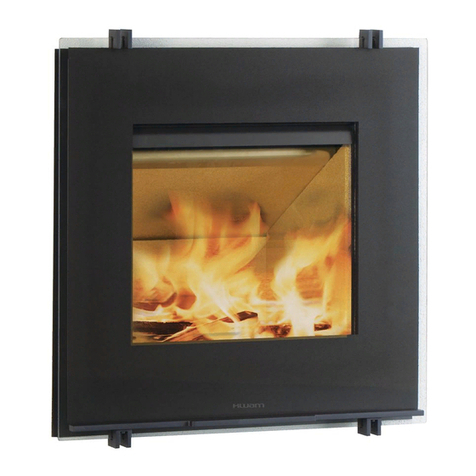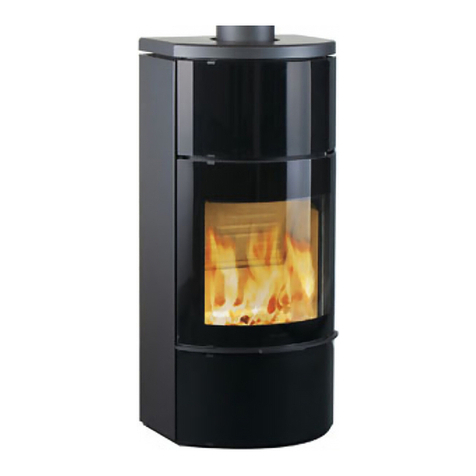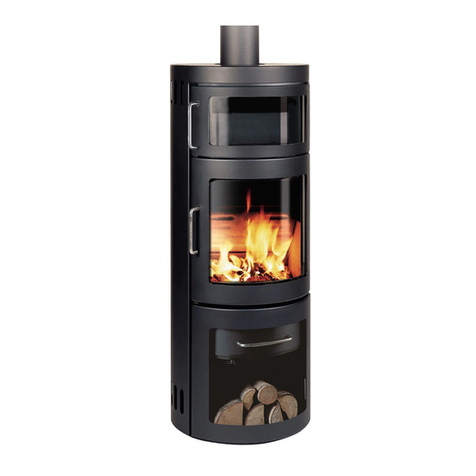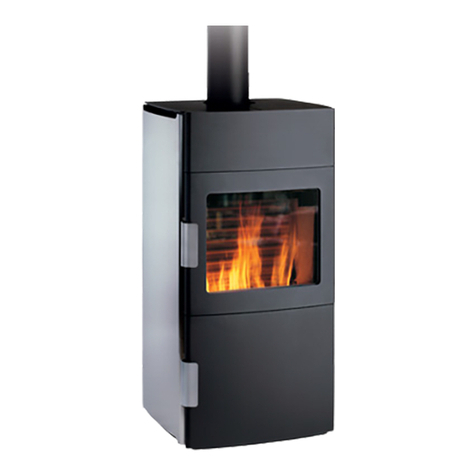10
Drawing A HWAM 3630/HWAM 3650
Min. distances:
HWAM 3640/HWAM 3660
Min. distances:
1. Recommendedforbrickwall,back,cm 10 10
2. Recommendedforbrickwall,side,cm 15 10
1. For inflammable wall, back, cm 10 10
2. For inflammable wall, side,cm 40 40
1. To inflammable wall,corner installation,cm 35* 20*
3. Distance to furnishings in front, cm 90 90
*All dimensions in connection with corner installation are only recommendations.Contact your chimney
sweep for a clarification.
Please be aware that not all glass parts are heat-resistant. For this reason, a glass wall should sometimes
be treated as a flammable wall, in which case we ask you to contact your local chimney sweep or glass
producer to hear at what distance the stove should be kept from glass.
Remember to pay attention to any regulations concerning the required distance between
the wall and smoke pipe.
The distance to a brick wall is set to faciliate the servicing of the HWAM Autopilot IHSTM.
Requirements for chimney and smoke pipe
The chimney must be of a sufficient height to enable an adequate draft and to prevent smoke problems.The
stove requires a draft of at least 12 Pa.
The chimney must have a minimum opening equivalent to Ø 15 cm.The chimney opening should always
be at least the size of the outlet socket of the stove.The chimney must have an easily accessible soot door.
Smoke pipe and chimney must always be suitable for a stove connection.Ask your HWAM dealer for
more information.
Fitting the loose parts
Before the stove is installed, you must ensure that all loose parts are fitted correctly.
Make sure that the chimney is tight and that no false draft is caused around neither the cover plate, in
connection with a covered smoke outlet, nor the cleanout door and pipe connections. Please note that
bentand/orhorizontalsmokepipeswillreducetheeffectofthechimneydraft.
Vertical cross-section of the stoves (Drawing B)
B2:HWAM3630,HWAM3640 B3:HWAM3650,HWAM3660
1. Smoke shelf. Must be placed on the steel rail and the holder at the front in the middle.
2. The baffle plate is suspended on three hooks beneath the top plate.One of the hooks has an additional
flap that is bent upwards as protection during transport.This flap should be removed with the help
of a screwdriver before installation.
3. The rear smoke outlet has been closed at the factory by screwing a plate over it and it is therefore
hidden behind the rear plate.
4. Removablerearplate.Thismustalwaysbemountedifthestoveisplacednexttoacombustiblewall.
5. Loose heat shield.This must always be mounted if the stove is placed next to a combustible wall.
6. Loose heat shield beneath the ash pan. Can be used as a lid when the ash pan is removed for emptying.
Connection to chimney
All the stoves have both rear and top smoke outlet.
that can be connected to an approved steel chimney on top or directly out at the rear to a chimney.
Make sure that the chimney is tight and that no false draft is caused around neither the cover plate, in






